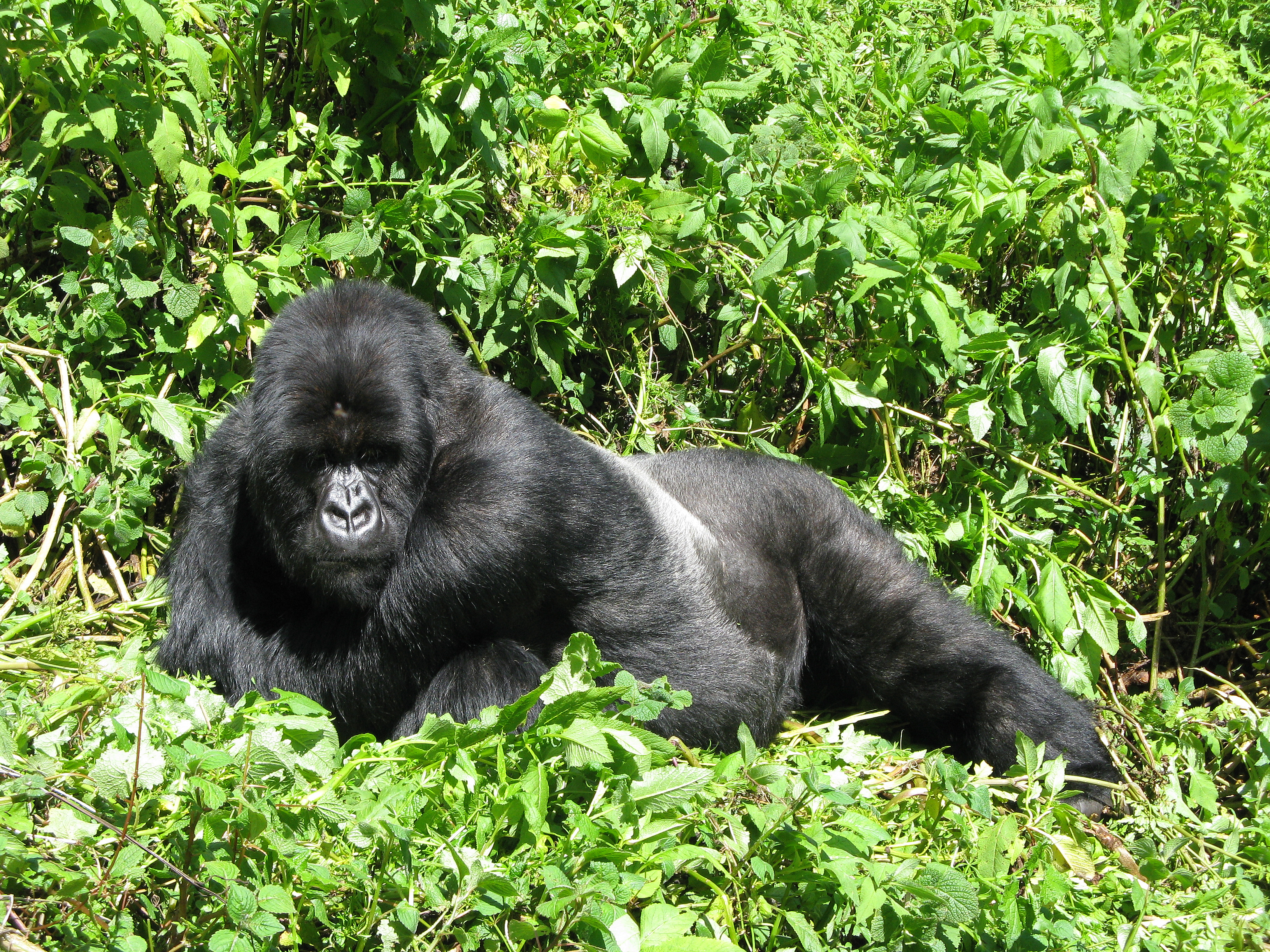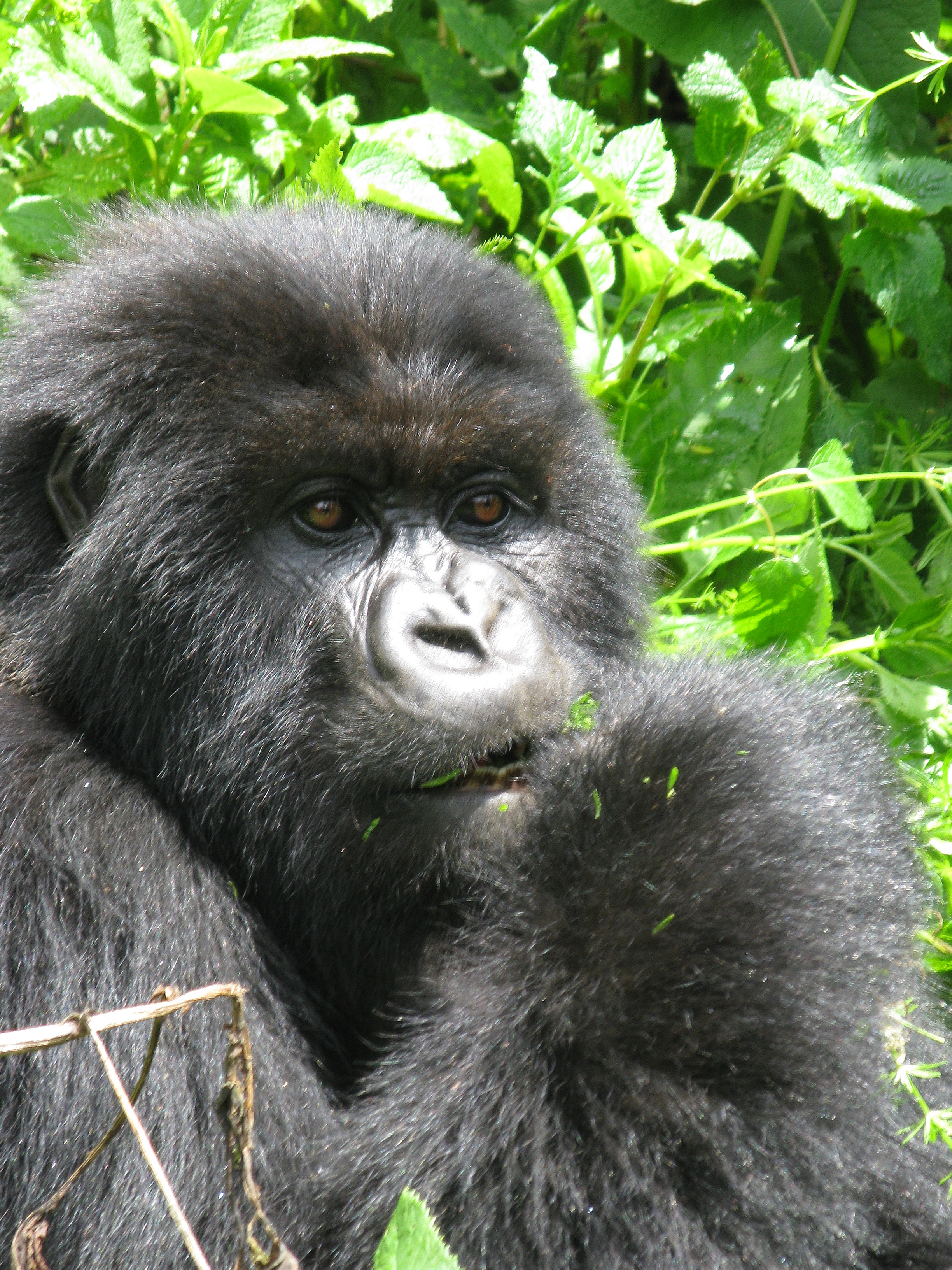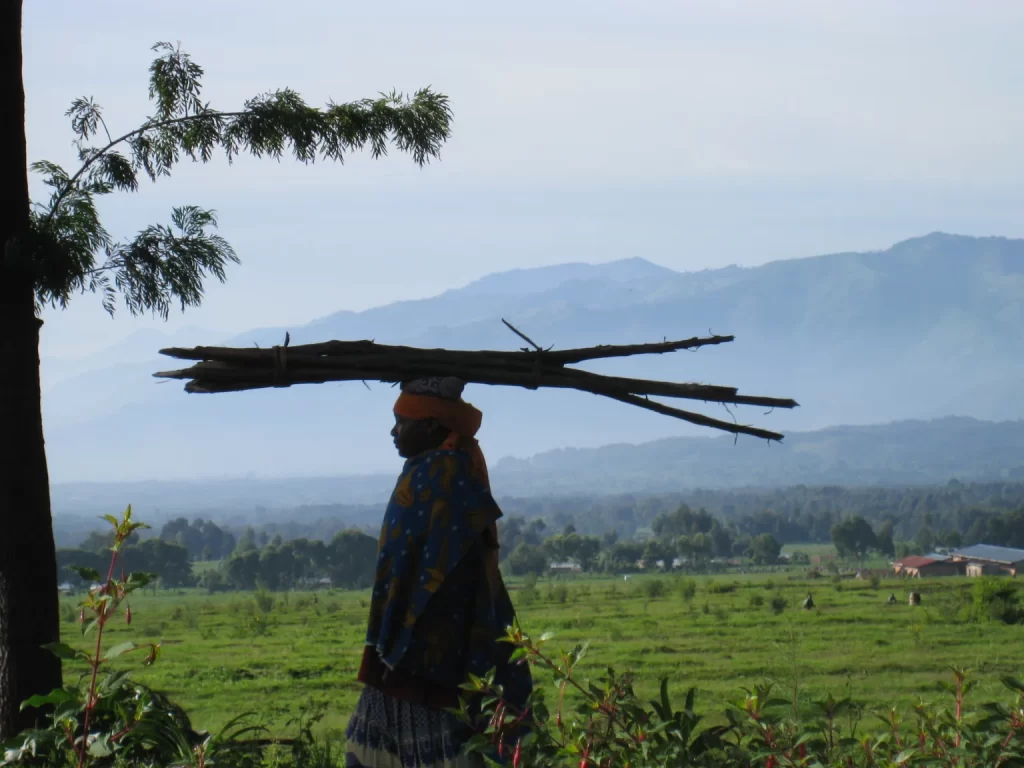Since then, gorilla conservation programmes have worked tirelessly to disarm the mines and minimise the pressures presented by humans. There is also greater awareness among policy- makers of the value of the mountain gorillas in terms of tourism revenue in countries that have struggled to present a positive international image.
The opportunity to observe these creatures at close range in their natural habitat is a rare privilege. The hour I spent with them didn’t even shave the edge off my curiosity. I couldn’t imagine what they thought of our prying eyes, or understand why they accepted our intrusion so graciously.
As we watched they shared intimacies, played, preened, stroked and nurtured their young and each other. And all the while the reel spun and our time, too soon, played out.
We retreated down the Karisimbi Volcano to the border of the national park, after which the scenery gave way to the terraced fields that characterise Rwanda’s landscape. Subsistence agriculture is the mainstay of Rwanda’s economy and the town of Ruhengeri, which is the staging post for the gorilla trek, is surrounded by lush cultivated countryside and overlooked by a ring of volcanoes. The idyllic setting and friendly people overcome the vestiges of poverty that cling to a town that has suffered greatly by its border location.
However, resilience appears to be an emblem of the Rwandan nation. Arriving in the capital Kigali, I was struck by the level of optimism and opportunity in the city. Cranes dotted the skyline and I met a number of people who had moved there to open up businesses. The city sprawls across hills which overlook its spreading suburbs, and its greatest attraction is its lively street life. It is determinedly looking forward and outwards and the scale of its physical recovery from the insanity of the 1994 genocide is remarkable.




